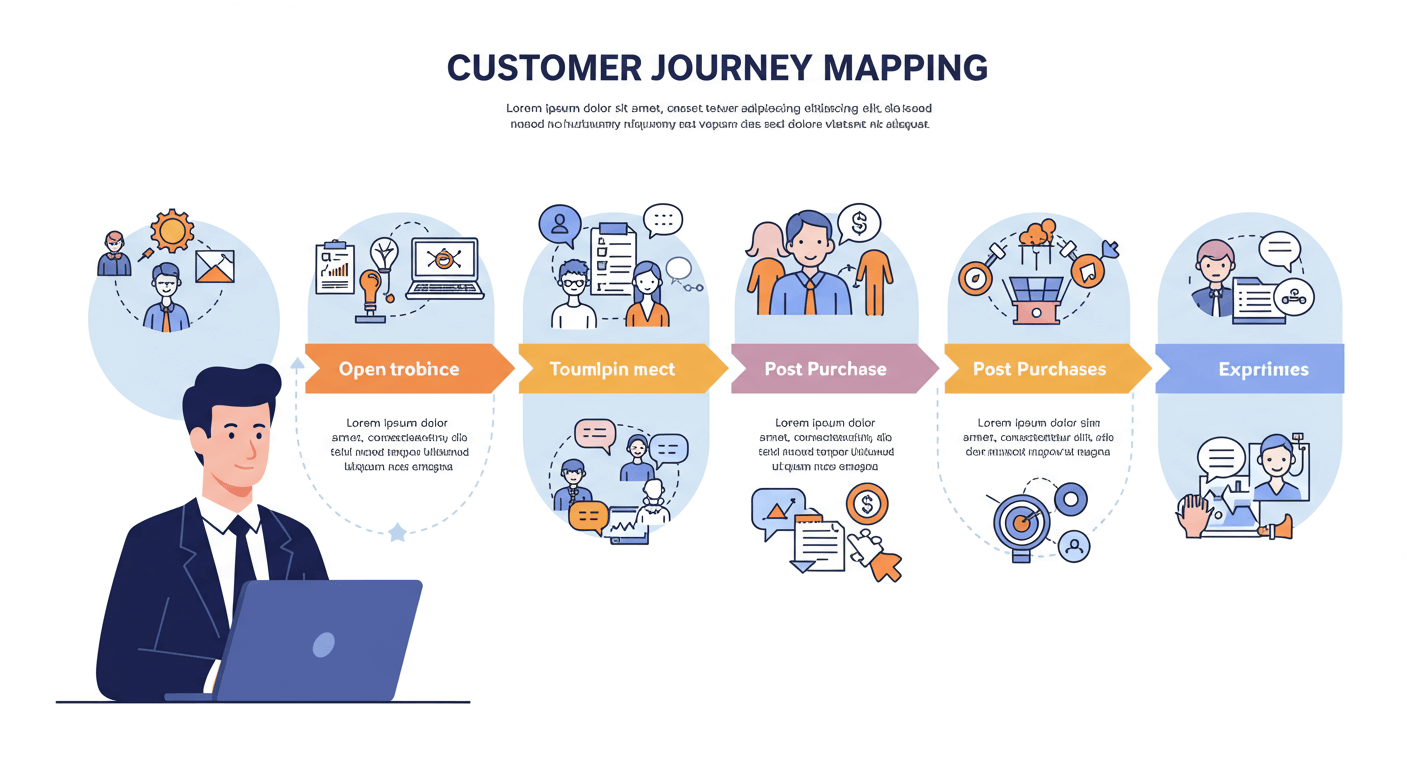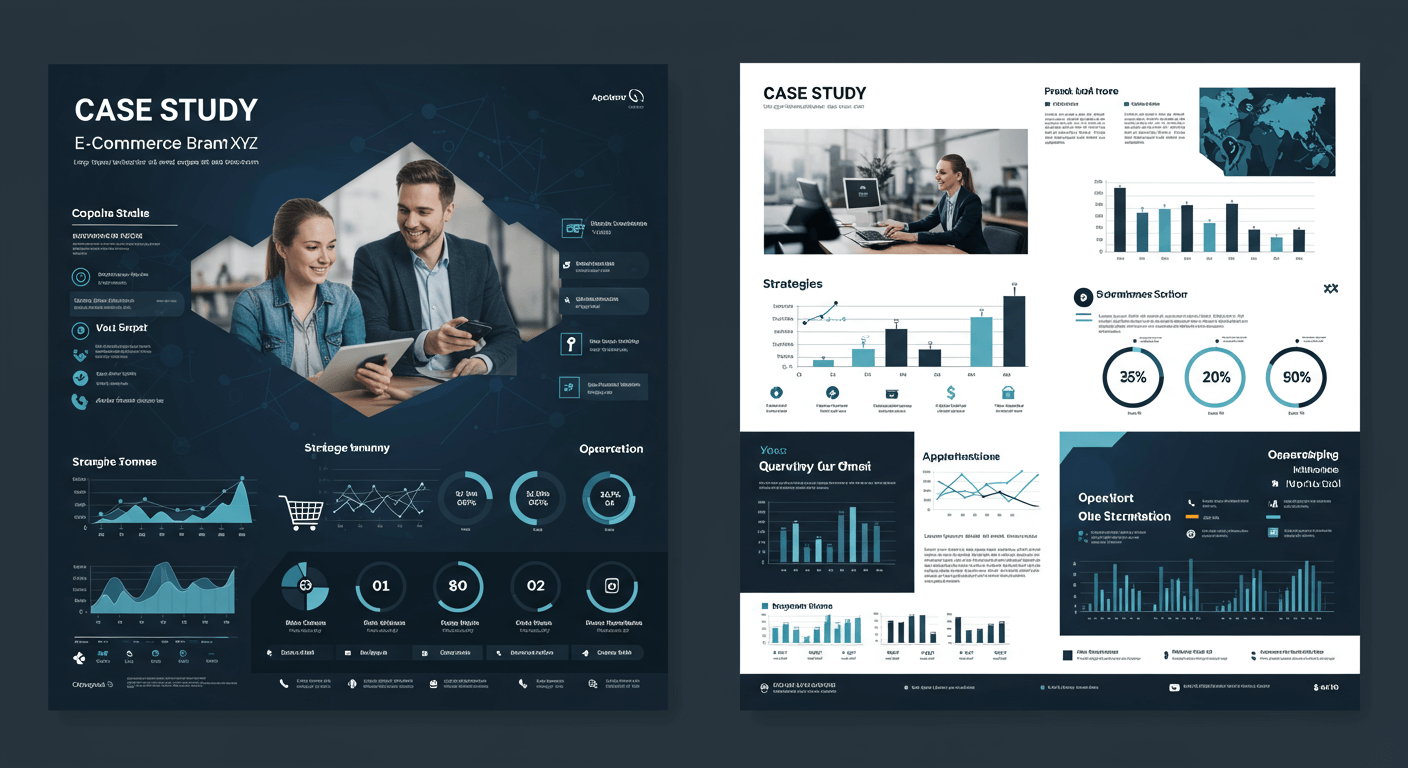Mapping the customer journey is vital for businesses seeking to understand how prospects interact with their brand. From initial awareness to purchase and beyond, every touchpoint shapes the overall experience. In today’s data-driven marketing landscape, tracking tools have emerged as indispensable allies for marketers looking to capture, analyze, and act on customer behavior insights. By leveraging robust tracking solutions, companies can visualize the steps customers take, identify friction points, and optimize engagement strategies at each stage of the funnel. Whether you’re a startup aiming to accelerate growth or an enterprise seeking to refine complex omnichannel efforts, mastering customer journey mapping with tracking tools is a game-changer.
What is Customer Journey Mapping?

Customer Journey Mapping is a strategic process that visualizes the end-to-end experience customers have with a brand. It encompasses every interaction, from initial exposure via digital ads or social media posts to deeper engagements on your website, email communications, and post-purchase support channels. By creating a journey map—often represented as a flowchart or timeline—marketers can pinpoint where customers drop off, identify points of delight, and understand the motivations behind each action. Traditional journey mapping relies on qualitative research, such as user interviews and surveys, to capture emotional and behavioural insights. However, when combined with quantitative data from tracking tools, journey maps become more dynamic, data-rich, and accurate. This hybrid approach allows teams to cross-validate hypotheses, adjust strategies in real time, and measure improvements with concrete metrics. Ultimately, a well-defined journey map serves as the blueprint for orchestrating seamless, personalized experiences that resonate with customers at every stage. To build an effective journey map, start by defining customer personas that encapsulate segments with distinct needs, preferences, and behaviours. Align these personas with their respective touchpoints, channels, and emotional states. Then layer in tracking data—such as click paths, session duration, and conversion events—to quantify the frequency and impact of each interaction. The result is a holistic view that guides cross-functional teams, from UX designers to customer support, in delivering cohesive, personalized experiences that foster long-term loyalty and advocacy. Learn more about Real-Time Tracking Tools.
Role of Tracking Tools in Journey Mapping
Tracking tools serve as the foundation for data-driven customer journey mapping. They enable marketers to capture real-time user interactions across multiple channels, devices, and sessions. Common solutions include web analytics platforms, tag management systems, heatmap tools, session replay software, and specialized journey analytics suites. Each offers unique capabilities: analytics platforms track page views, events, and conversions; tag management systems streamline deployment of tracking scripts; heatmaps reveal attention hotspots; and session replay tools surface usability issues by visually replaying user behavior. When integrated and configured properly, these tools collect comprehensive datasets that feed into journey mapping exercises, transforming static diagrams into dynamic, interactive maps. This depth of visibility allows teams to identify hidden bottlenecks, such as slow-loading pages or confusing navigation paths, and measure the precise impact of optimizations, like A/B tests. By harnessing the full spectrum of tracking technologies, marketers gain the confidence to make informed decisions, prioritize high-impact changes, and deliver personalized journeys that adapt based on evolving customer behaviors and preferences.
Key Metrics to Track
Identifying the right metrics is crucial for meaningful customer journey mapping. These indicators transform data into actionable insights, allowing marketers to uncover strengths and weaknesses within the customer experience. While the exact metrics will depend on your business model and objectives, several universal KPIs offer immediate value across industries:
- Page Views and Session Count: Measure overall engagement and content reach.
- Bounce Rate and Exit Rate: Identify friction points and content gaps.
- Click-Through Rate (CTR): Evaluate the effectiveness of CTAs and navigation.
- Conversion Rate: Track goal completions, such as form submissions or purchases.
- Time on Page and Session Duration: Gauge content relevance and user interest.
- User Flow and Path Analysis: Visualize common journeys and drop-off points.
- Customer Lifetime Value (CLV): Quantify long-term revenue potential.
- Churn Rate: Monitor customer attrition and retention trends.
In addition to these core metrics, consider tracking qualitative signals—such as survey feedback or Net Promoter Score (NPS)—to capture emotional drivers that pure numbers can’t convey. Combining quantitative and qualitative data results in a comprehensive roadmap for optimization, enabling teams to prioritize initiatives with the highest potential impact on customer satisfaction and revenue growth.
Implementing Tracking for Customer Journey Mapping
A structured implementation approach ensures accurate data collection and reliable insights. Follow these steps:
- Define Objectives: Align on business goals, key touchpoints, and success metrics before configuring your tracking tools.
- Create or Update Personas: Segment audiences based on demographic, behavioral, and psychographic attributes for tailored tracking strategies.
- Develop a Tracking Plan: Document events, variables, and triggers to capture meaningful interactions consistently.
- Implement Tag Management: Use a tag manager to deploy and maintain tracking scripts across digital properties with minimal developer dependency.
- Validate Data Quality: Conduct end-to-end testing, QA audits, and data reconciliation between tools to ensure accuracy.
- Integrate Systems: Connect analytics, CRM, marketing automation, and journey mapping platforms for a unified view.
- Enable Real-Time Monitoring: Configure dashboards and alerts to detect anomalies and track performance continuously.
This step-by-step process lays the groundwork for a robust tracking ecosystem that fuels accurate journey mapping and data-driven optimization efforts.
Selecting the Right Tracking Tools
With numerous tracking solutions on the market, choosing the right tools hinges on factors like your technical infrastructure, team expertise, budget, and data requirements. Consider the following criteria when evaluating options:
- Ease of Implementation: Look for solutions with intuitive interfaces, robust documentation, and seamless integrations.
- Data Granularity: Ensure the tool provides granular event tracking, custom dimensions, and flexible segmentation.
- Scalability: Verify that the platform can handle growing data volumes and add new channels without performance issues.
- Real-Time Capabilities: Real-time data processing enables faster decision-making and agile optimization.
- Privacy and Compliance: Choose a tool that supports GDPR, CCPA, and other regional data privacy regulations.
- Cost Efficiency: Balance feature sets against pricing tiers to maximize return on investment.
Popular options include Google Analytics 4, Adobe Analytics, Mixpanel, Amplitude, Hotjar, and Tealium. By aligning tool capabilities with your unique requirements, you’ll be better positioned to gather reliable data, streamline analysis, and derive actionable journey insights.
Best Practices for Accurate Data Collection
Maintaining data integrity is essential for effective journey mapping. Adopt these best practices to ensure your tracking ecosystem delivers high-quality insights:
- Standardize Naming Conventions: Use clear, consistent names for events, variables, and custom dimensions to simplify analysis.
- Version Control Tag Changes: Track updates to tags and scripts, enabling quick rollback if issues arise.
- Regularly Audit Tracking Implementations: Schedule periodic reviews to catch gaps, duplicates, or deprecated tags.
- Implement Sampling Strategies: For high-traffic sites, apply intelligent sampling to manage data volumes without skewing results.
- Educate Stakeholders: Provide training, documentation, and shared dashboards to align teams on data definitions and insights.
- Monitor Data Privacy Compliance: Ensure consent mechanisms are in place and that personal data handling adheres to legal requirements.
By embedding these practices into your analytics operations, you’ll minimize errors, boost stakeholder confidence, and maintain a reliable foundation for journey optimization initiatives.
Case Study: E-Commerce Brand XYZ

Brand XYZ, a mid-sized e-commerce retailer, implemented a comprehensive journey mapping initiative to address declining conversion rates. They integrated Google Analytics 4, Hotjar, and a customer data platform (CDP) to capture user interactions at every step of the funnel. After defining personas and mapping key touchpoints, the team focused on tracking abandoned cart events and post-purchase engagement. Through session replays, they discovered that unexpected shipping costs were causing cart abandonment at the payment stage. Armed with this insight, XYZ introduced a transparent shipping cost calculator earlier in the journey and A/B tested various placement options.
Within four weeks, the brand saw a 12 percent lift in conversion rate and a 20 percent reduction in cart abandonment. They also enriched their CDP profiles with behavioral data, enabling personalized email campaigns that drove repeat purchases. This case demonstrates how a data-driven approach to customer journey mapping delivers measurable improvements by pinpointing friction, validating hypotheses, and optimizing touchpoints based on real user behavior.
Key takeaways from XYZ’s project include the value of cross-tool integration, the importance of combining quantitative and qualitative data, and the impact of rapid testing cycles. By maintaining an agile mindset and iterating based on live metrics, the team continues to evolve their journey map and deliver progressively better experiences for customers.
Future Trends in Journey Tracking
As technology evolves, customer journey tracking will become more sophisticated and predictive. Emerging trends include:
- AI and Machine Learning: Advanced algorithms will uncover hidden patterns, forecast user behavior, and recommend real-time optimizations.
- Privacy-First Analytics: Server-side tracking, data clean rooms, and federated learning will balance personalization with stringent data privacy requirements.
- Omnichannel Attribution Models: Unified attribution frameworks will leverage multi-touchpoint data to allocate credit accurately across the customer journey.
- Augmented Analytics Dashboards: Interactive visualizations powered by natural language processing will make insights accessible to all business users.
Investing in scalable, flexible tracking architectures now paves the way for seamless adoption of these innovations, ensuring your journey mapping capabilities keep pace with evolving customer expectations and technological advancements.
Conclusion
Customer journey mapping underpinned by robust tracking tools offers a powerful avenue for creating exceptional experiences and driving business growth. By defining clear objectives, selecting the right metrics, and implementing a structured tracking framework, marketers can gain unparalleled visibility into user behaviors and preferences. Best practices—such as standardizing naming conventions, auditing implementations, and integrating qualitative feedback—ensure the accuracy and relevance of your insights. Drawing from the case study of Brand XYZ, it’s evident that data-driven optimization can deliver significant improvements in conversion rates and customer loyalty. Looking forward, leveraging AI, privacy-first analytics, and augmented dashboards will further enhance your journey mapping capabilities. Embrace these strategies today to build a resilient, scalable foundation that empowers your organization to adapt to changing customer needs and stay ahead of the competition.

